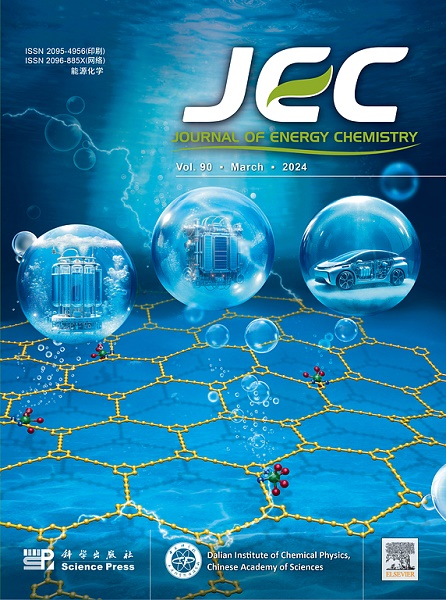Physicochemical dual cross-linking polymer stabilizing the Si-C-Cu interfaces for long-life silicon anode
IF 13.1
1区 化学
Q1 Energy
引用次数: 0
Abstract
Polymer binders possess significant potential in alleviating the volume expansion issues of silicon-based anodes, yet remain challenging due to insufficient interfacial interactions with individual components (Si, C, and Cu) of the anode. Herein, we report the synthesis of a stable three-dimensional network structure of the PAA-PEA (polyacrylic acid-polyether amines) polymer binder through intermolecular physicochemical dual cross-linking. By incorporating polar functional groups, the binder molecules not only form strong C–O–Si, N–Si, O=C–O–C, and O=C–O–Cu covalent bonds but also enhance non-covalent interactions with Si, C, and Cu, thereby improving adhesion between the binder and each interface of the anode. Furthermore, weak hydrogen bonds, acting as “sacrificial bonds”, dissipate energy and disperse accumulated stress, improving the material flexibility. Due to the high mechanical stability of the framework, which combines both rigidity and flexibility and the coupling effect at the three interfaces, the movement and separation of electrode components are effectively restrained, significantly enhancing the cycling stability of silicon-graphite anodes. The PAA-PEA 2000 electrode exhibits a capacity retention of 78% after 500 cycles at a current density of 0.2 A g−1. This work provides insights into the mechanism of binders and guides the design of polymer binders for high-performance Si-based electrodes.

求助全文
约1分钟内获得全文
求助全文
来源期刊

Journal of Energy Chemistry
CHEMISTRY, APPLIED-CHEMISTRY, PHYSICAL
CiteScore
19.10
自引率
8.40%
发文量
3631
审稿时长
15 days
期刊介绍:
The Journal of Energy Chemistry, the official publication of Science Press and the Dalian Institute of Chemical Physics, Chinese Academy of Sciences, serves as a platform for reporting creative research and innovative applications in energy chemistry. It mainly reports on creative researches and innovative applications of chemical conversions of fossil energy, carbon dioxide, electrochemical energy and hydrogen energy, as well as the conversions of biomass and solar energy related with chemical issues to promote academic exchanges in the field of energy chemistry and to accelerate the exploration, research and development of energy science and technologies.
This journal focuses on original research papers covering various topics within energy chemistry worldwide, including:
Optimized utilization of fossil energy
Hydrogen energy
Conversion and storage of electrochemical energy
Capture, storage, and chemical conversion of carbon dioxide
Materials and nanotechnologies for energy conversion and storage
Chemistry in biomass conversion
Chemistry in the utilization of solar energy
 求助内容:
求助内容: 应助结果提醒方式:
应助结果提醒方式:


